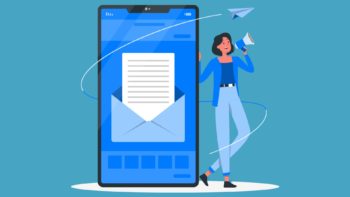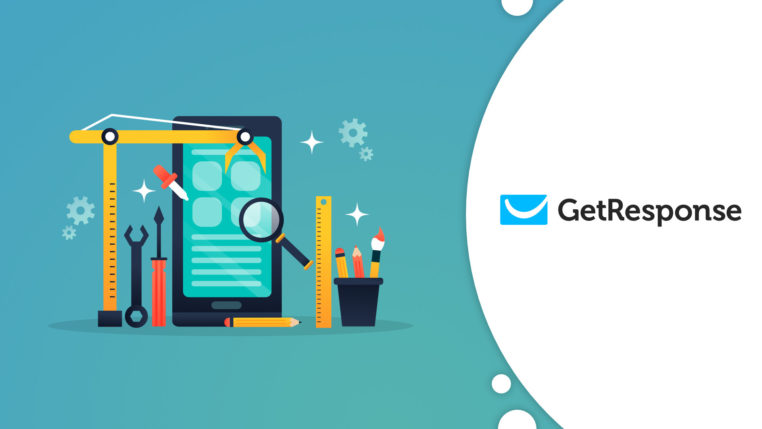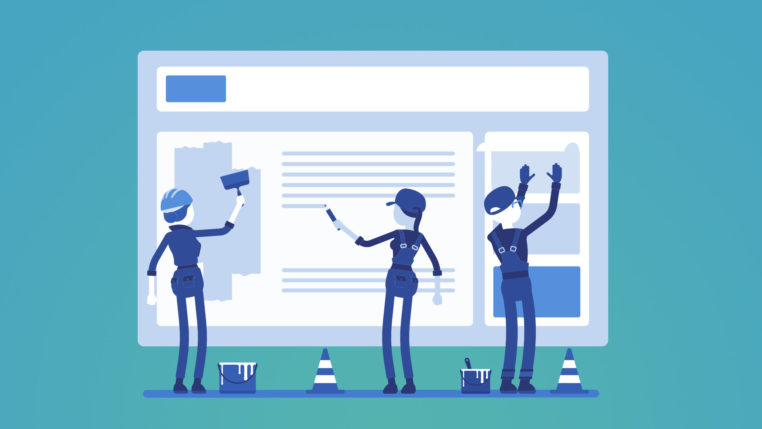How To Create And Launch Your First Email Newsletter

Table of Contents
An email newsletter is one of the most effective online marketing techniques. Companies use newsletters to provide the latest information about their products and services, or just to share strategies and actionable tips with their reader base. With the right links placed in it, an email newsletter helps readers revisit your site, enabling you to stay top of mind and increase conversions.
But if you’ve never sent out a newsletter, it may seem like an uphill task. Sure, it requires time and effort, but when pulled off right, newsletters are worth the energy.
You need to create compelling calls to action, design a responsive email format compatible with different devices and inboxes, and put thought into your email copy. Even more so, the most essential thing is to keep your email away from spam folders.
To make your email newsletter campaign effective, we will discuss the most important parts of email newsletters. This will help you correctly plan and execute your first email newsletter. And one that’s hard for your audience to resist engaging with!
So, without further ado, let’s find out how to create your first email newsletter.
1. Plan ahead
Your newsletter must be a more than just a notification that you send to your customers either on a daily, weekly, or monthly basis. You have to finalize the strategy for creating and sending a newsletter, just like any ad campaign for your blog or website.
Define the following in order to execute powerful newsletters:
- Your target audience by keeping in mind their needs and requirements
- The purpose of sending the newsletter. Is it to generate traffic for your website, build customer relationships, boost sales or promote content?
- The type of content to promote e.g. blog posts, feature updates, or promotions like a flash sale
- The cadence of sending the email. Should you send it once a week or once a month? How often would your readers like to hear from you?
- The value you deliver to your customers and subscribers through the newsletter
Once you think these through, you’ll be able to create purpose-driven and irresistible emails.
2. Create an engaging format
If you read a newsletter regularly, it’s probably offering valuable content that’s easy to consume.
Good designs make it easy for readers to extract information from a newsletter. These are easy on the eyes and instantly pull readers in.
Figure out whether you’d like to add relevant news or upcoming industry trends in your newsletter. Should it just be a product feature update or a roundup of your most useful resources? You can also go with a bit of everything, depending on what’s most useful for your audience.
Your first newsletter may not be a success and that’s fine! It’s important to keep testing and see how your audience engages with your content. Do they click through to the links you’ve added? How high were the open rates? All of this will help you optimize your newsletter format.

3. Add content
After setting the goals and format, you can get a clear picture of your needs for creating the newsletter. Based on that, you can decide the content requirements for every edition, depending on the frequency of the newsletter edition.
Choose between the active and the passive approach to adding content.
- The active approach creates content to target a specific topic or goal
- The passive approach curates existing content to target a specific topic or goal
The active approach is much more time consuming but results in extremely specific content.
On the other hand, the passive approach saves time and is more beneficial for longer newsletters. Social media platforms are the best source for collecting information about ongoing trends and demands.
Whatever the approach you opt for, the content must be relevant, useful, and unique for your readers.
4. Ponder over the subject line and email copy
The subject line is the first interaction a user will have with your newsletter so it needs to pack a punch. Eye-catching subject lines compel readers to open the email and consume your content. While this is extremely rewarding, crafting a good subject line is rarely ever straightforward.
- A good subject line must be short and actionable. It is the only way to grab attention when users are scanning through hundreds of emails every day.
- It should be tested. Prominent newsletter platforms like Mailchimp run A/B tests to compare subject lines by sending the newsletter to a few subscribers. This helps select the winning subject line.
Once that’s done, you need to make sure your copy is engaging and captivating. There’s no point of high open rates if your copy doesn’t live up to the promise. Promote your content well, add captivating graphics, use power words, and keep your audience interests in mind at all times.
5. Choose a sender’s email address
Sender email address is another important thing that you have to select wisely. This too, impacts your email open rates and conversions.
Some people like to receive emails from a real person, humanizing the content and making it more friendly. Others prefer them to come from a company email like info@example.com that adds credibility to the newsletter.
Again, A/B testing is your answer. Test your emails by sending them to a small set of subscribers with the two different email addresses. Check which one returns higher open rates.
6. Choose an email marketing client
When it comes to emailing clients, some companies prefer to use free email clients like Gmail and Yahoo. Others prefer better branding and their own business email addresses.
Free email clients put limitations on email sending and are not suitable for sending emails in bulk. There are various options available online dedicated for bulk emails so choose one that fits your needs the best. Make sure that your email client is not declared as spam and offers high email deliverability.
Paid email clients also offer newsletter builders so your campaigns always receive high engagement. You can also refer to some newsletter ideas for inspiration.

7. Ensure legal compliance
It is important to ensure that the email newsletter you send is in compliance with any laws that govern email campaigns.
For your emails to steer clear of the spam folder, you need to comply by the following two laws:
- CAN SPAM: CAN-SPAM requires email marketers to place the address in the footer of the email and also provide an easy way to unsubscribe from services. It is designed for people who don’t want to receive email anymore.
- GDPR Compliance: This law was passed in 2018 in Europe and was similar to, but more comprehensive than the CAN-SPAM. It requires email marketers to send email newsletters only to people who opt to receive them.
These laws indicate that legally, you require authority to send emails to your target audience. This authority only comes from asking them to opt in to your emails. Cold calling is frowned upon, especially for people who live in Europe.
Final Thoughts
So, now you know how to launch an email newsletter. With the advancement in technology in every field, an email campaign is a useful and attractive way to capture the community. While starting out may feel intimidating, it doesn’t have to be hard to send your first newsletter. Just follow our recommendations and keep your user at the heart of every decision you make.
This will enable you to run successful email marketing campaigns every time.
Share this article



